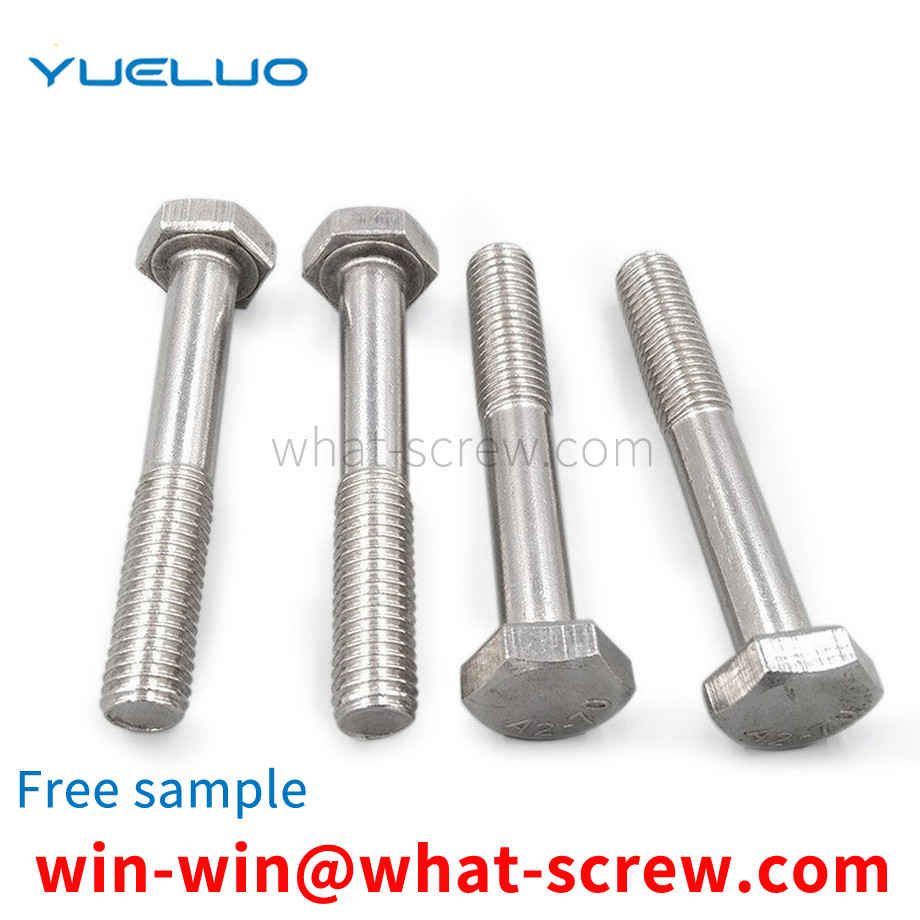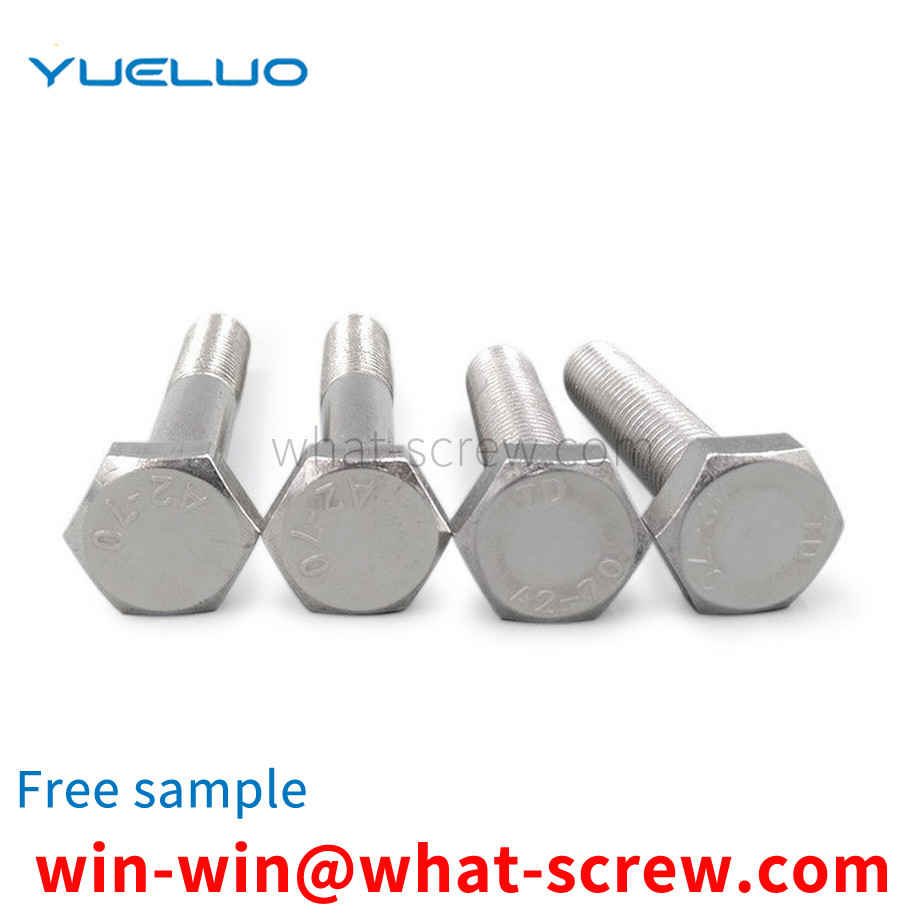Stainless steel screws are classified into austenitic stainless steel, ferritic stainless steel, martensitic stainless steel, and precipitation hardening stainless steel. The selection of stainless steel screws is also based on principles. Where to start, let you choose the stainless steel screws you need. After comprehensive and comprehensive consideration of these five aspects, the grades, varieties, specifications and material standards of stainless steel screws are finally determined. Austenitic stainless steel: the most basic alloying elements of austenitic stainless steel are chromium and nickel. The grade is a chromium-nickel austenitic stainless steel with a chromium content of about 18% and a nickel content of about 8%, often called 18-8 stainless steel. The element ratio of chromium and nickel basically ensures that the structure of the steel is stable austenitic ferritic stainless steel: 430 type ordinary chromium steel, its corrosion resistance and heat resistance are better than 410 type, magnetic, but it It cannot be strengthened by heat treatment, and is suitable for stainless steel screws with slightly higher corrosion resistance and heat resistance and general strength requirements. Martensitic stainless steel: Type 410 and 416 can be strengthened by heat treatment, with a hardness of 35 to 45HRC, and good machinability. They are used for general-purpose heat-resistant and corrosion-resistant stainless steel screws. Type 416 has a slightly higher sulfur content and is a free-cutting stainless steel. Type 420, sulfur content? R0.15%, improved mechanical properties, can be strengthened by heat treatment, maximum hardness value of 53 ~ 58HRC, used for stainless steel screws requiring higher strength. Precipitation hardening stainless steel: 17-4PH, PH15-7Mo, they can get higher strength than the usual 18-8 type stainless steel, so they are used for high-strength, corrosion-resistant stainless steel stainless steel screws. A-286, a non-standard stainless steel, has higher corrosion resistance than commonly used Type 18-8 stainless steels, as well as good mechanical properties at elevated temperatures. Used as high-strength, heat-resistant, corrosion-resistant stainless steel screws, can be used to 650 ~ 700 ℃. Austenitic stainless steel: The commonly used models are 302, 303, 304, and 305, which are the so-called 18-8 austenitic stainless steels. Both corrosion resistance and mechanical properties are similar. The starting point of selection is the production process method of stainless steel screws, and the method depends on the size and shape of stainless steel screws, and also depends on the quantity of production. Type 302 is used for machined screws and self-tapping bolts. Type 303 In order to improve machinability, Type 303 stainless steel is added with a small amount of sulfur and is used to machine nuts from bar stock. Type 304 is suitable for hot heading stainless steel screws, such as longer gauge bolts, large diameter bolts, which may be beyond the scope of the cold heading process. Type 305 is suitable for cold heading processing of stainless steel screws, such as cold formed nuts, hex bolts. Type 309 and Type 310, their Cr content and Ni content are higher than 18-8 type stainless steel, suitable for stainless steel screws working at high temperature. Types 316 and 317, both of which contain the alloying element Mo, have higher high temperature strength and corrosion resistance than 18-8 type stainless steel. Type 321 and Type 347, Type 321 contains a relatively stable alloying element Ti, Type 347 contains Nb, which improves the intergranular corrosion resistance of the material. It is suitable for stainless steel standard parts that are not annealed after welding or serve at 420~1013℃.
Welding stud is also called welding screw, which belongs to a kind of fastener connected with high strength and rigidity. Welding stud is the abbreviation of cylindrical head welding stud for arc stud welding. Industrial plant construction, highways, railways, bridges, towers, automobiles, energy, transportation facilities, airports, stations, power stations, pipeline supports, lifting machinery and other types of steel structures and other projects.
screw suitable for a variety of tools is a single-structure threaded part, including a screw body and a screw head. The outer surface of the screw body is processed with an external thread 1, and the outer side of the screw head is formed by six screw heads. Prismatic, the top surface of each edge of the outer hexagonal prism is a boss, between each boss is an end face groove 4, and the middle of each boss is provided with an end face hole 3; the inner side of the screw head is formed by six screw heads. The side surface 5 forms an inner hexagonal prism hole, and the bottom of the inner hexagonal prism hole is processed with a cross groove 13 .
A screw belt structure, especially a screw belt that can position the screws on the screw belt, so that the screws do not swing, so that the screws can be stably aligned with the points where the screws are to be screwed, and the screw fixation of the screws is facilitated. In its overall implementation and use, the innovative design of the screw belt structure increases the practical function characteristics.
The positioning pin is a pin designed to accurately position the two adjacent parts of the mold in a mold composed of two or more parts. It can be seen that the positioning pin plays a positioning role, and the mold must be accurately synchronized when it is closed. product, and the positioning pin can make the upper and lower molds play a role in accurate positioning. In the mold design and manufacture of Yueluo, the positioning pin is one of the most common parts. Since it is only used for positioning between parts, few people will pay too much attention to it. In the cold stamping process of Yueluo, the dimensional accuracy of the blanking parts depends on the size of the working part of the punch and the concave die, and the dimensional difference between them constitutes the blanking die gap. Gap is an important process parameter for die design, and its size has a great influence on the quality of the section of the blanking part, the blanking force, and the life of the die. If the gap is too large, punching burrs will appear in punching; if the gap is too small, secondary cracks will occur in the section and extrusion burrs will appear, which will make the quality of the section after punching unsatisfactory, and a reasonable gap will not only help the punching section. The improvement of quality also contributes to the improvement of the lifespan of the three-tool.
We have many years of experience in the production and sales of screws, nuts, flat washers, etc. The main products are: automotive screws, knurled nuts, rubber plug expansion rubber plug 6m screws, hexagonal torx flange bolts and other products, we can provide you with suitable products Your fastener solution.



















 Service Hotline
Service Hotline




